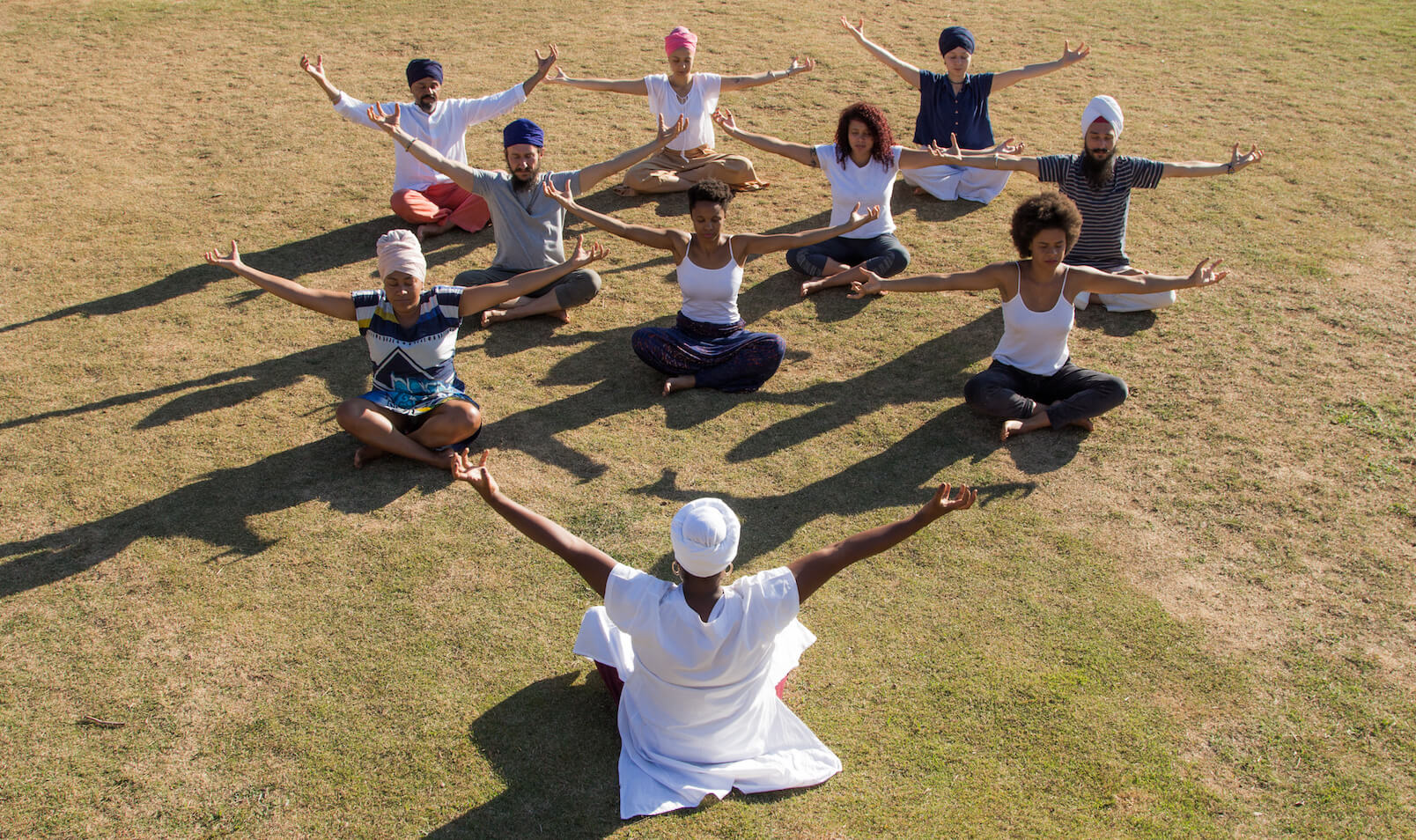The Science of Kundalini Yoga for Trauma and Addictions
As practitioners of Kundalini Yoga, we know how this practice can change our lives and help us find our way through difficult situations. It is not surprising that Kundalini Yoga is helpful for overcoming symptoms of post-traumatic stress disorder (PTSD) and addictions.
Dr. Shanti Shanti Kaur of the Guru Ram Das Center for Medicine and Humanology (GRD Center) has developed a protocol using Kundalini Yoga for PTSD, and Dr. Mukta Kaur has developed a Kundalini program for addictions known as SuperHealth®. Both of these programs have been tested in research studies and have been shown to be effective.
Studies Using Kundalini Yoga for PTSD and Addictions
A randomized controlled study (the gold standard for scientific research) was published by Dr. Farah Jindani and her colleagues last year 1. The results showed that participants of the GRD Center’s 8-week Kundalini Yoga trauma program had significantly improved PTSD symptoms, sleep, perceived stress, positive mood, resilience, and anxiety compared to those who did not participate in the program.
Dr. Jinani published a second study with open-ended questions asking the same participants of the Kundalini Yoga trauma program about their experience 2. They reported a variety of changes in well-being including more positive mood and behaviors, greater capacity for self-reflection, improved mental clarity, and higher self-esteem.
A pilot study was completed this year by Dr. Julie Staples, Daniel Mintie, and Dr. Sat Bir Singh Khalsa using an Integrative Trauma Recovery Program. This program incorporated the GRD Center’s Kundalini Yoga trauma protocol with group cognitive behavioral therapy and also resulted in significant improvements in PTSD symptoms and sleep 3.
Kundalini Yoga has been shown to be helpful for addictions as well. In a study done in India published by Dr. Sat Bir Singh Khalsa, a 90-day residential program for substance use including the SuperHealth® program showed significant improvement in areas related to daily living/role functioning and in relation to self/others. In addition, significant improvement was seen in behaviors related to active recovery and social and school/work performance 4.

How Do Yoga and Meditation Work in Relation to PTSD and Addictions?
PTSD affects several areas of the brain. The amygdala and hippocampus play a key role in the consolidation of memories which have a strong emotional component. In people with PTSD, the amygdala is over responsive and the hippocampus is physically smaller. These changes in brain structure and function may contribute to the intrusive nature of trauma memories in PTSD. A research study on chanting showed that people in an MRI machine chanting “OM” had significant deactivation of the amygdala 5.
Another study also showed significant deactivation of the amygdala after a 12-week Iyengar yoga program 6. In addition, an 8-week mindfulness meditation program showed a significant increase in size of the hippocampus 7.
There are also certain areas of the brain which play a key role in addictions. One pathway is related to the experience of craving and the other is related to the conscious control of craving. Most research studies on these mechanisms have been done with mindfulness meditation and smoking by looking at the parts of the brain where connectivity is enhanced in people practicing mindfulness. These studies have shown that mindfulness strengthens both pathways that may be involved in eliminating addictions.
Finally, decreased levels of a neurotransmitter called gamma- aminobutyric acid (GABA) are found in people with both PTSD and addictions to alcohol, tobacco, and cocaine. GABA interacts with nerve cells in the brain and is responsible for creating feelings of calmness. GABA is hypothesized to play a role in regulating a variety of addictive behaviors. It is possible that increasing GABA levels may help induce calmness in those with PTSD and also reduce addictions. One study has shown that just 1 hour of a single yoga session can increase GABA levels by 27% in experienced yoga practitioners 8.
While further research is needed, the current studies suggest that yoga and meditation may bring the parts of the brain that are affected by PTSD and addiction back to a normal state.
Works Cited:
1. Jindani F, Turner N, Khalsa SB. A yoga intervention for posttraumatic stress: A preliminary randomized control trial. Evidenced-Based Complementary and Alternative Medicine 2015; Article ID:351746.
2. Jindani FA, Khalsa GFS, A yoga intervention for patients suffering from symptoms of posttraumatic stress disorder: A qualitative descriptive study. The Journal of Alternative and Complementary Medicine; 2015; 21(7):401-408
3. Staples JK, Mintie D, Khalsa SB. Evaluation of a combined yoga and cognitive behavioral therapy program for posttraumatic stress disorder. The Journal of Alternative and Complementary Medicine. 2016; 22(6): A94.
4. Khalsa SB, Khalsa GS, Khalsa HK, Khalsa MK. Evaluation of a residential Kundalini yoga lifestyle pilot program for addiction in India. Journal of Ethnicity in Substance Abuse 2008;7:67-79.
5. Kalyani BG, Venkatasubramanian G, Arasappa R et al. Neurohemodynamic correlates of ‘OM’ chanting: A pilot functional magnetic resonance imaging study. Intenational Journal of Yoga 2011;4:3-6.
6. Cohen DL, Wintering N, Tolles V et al. Cerebral blood flow effects of yoga training: preliminary evaluation of 4 cases. TheJournal of Alternative and Complementary Medicine 2009;15:9-14.
7. Holzel BK, Carmody J, Vangel M et al. Mindfulness practice leads to increases in regional brain gray matter density. Psychiatry Research 2011;191:36-43.
8. Streeter CC, Jensen JE, Perlmutter RM et al. Yoga Asana sessions increase brain GABA levels: a pilot study. TheJournal of Alternative and Complementary Medicine 2007;13:419-426.
Your experience is important!
Share your wisdom with others like you. Leave your comment below